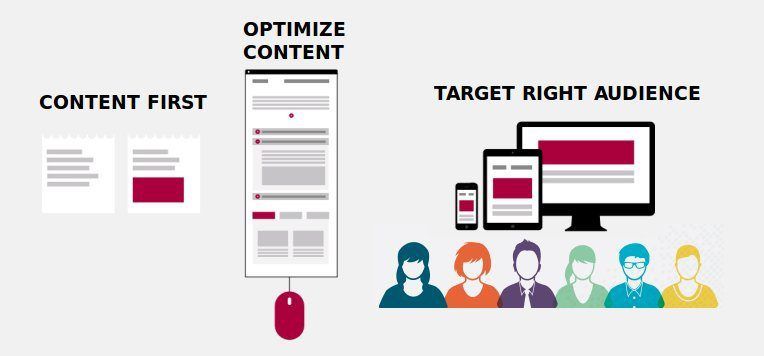One fundamental aspect of product management that is constantly being ignored until it proves it is vitality to the whole product discovery process is usability testing. Unfortunately, many product managers, novice or experienced, fail to acknowledge this step’s significance until their products hit the market and get insufficient attention or, worse, negative reviews from the user!
Product managers have to be the customers’ voice and know that their product is only successful if the customer can use it effectively. While the task seems straightforward, it requires a dedicated effort to grasp the user perspective genuinely.
The need to set testing standards is more emphasized as you get more senior as a product manager. Not only do you have to understand how the testing scheme works, but you also have to advocate its significance to the rest of the team.
If you have been struggling to incorporate testing into your product management practice or having trouble understanding what makes testing useful and resourceful, keep on reading. We will be sharing with you four best practices that you should adopt as a senior product manager to help you push your products to the market confidently.
Your Perspective Doesn’t Necessarily Reflect the Client’s Perspective
This might sound very obvious, but it’s certainly the number one reason why products fail in the market: what you think your users will do with the product differs from what your users do with the product.
It’s a reflex for any human being to think that how they perceive something is the same as how others perceive the same thing. Unfortunately, this is never the case, and you, as a product manager, are biased about the product as there is an apparent information asymmetry between you and the users.
How do you get over this natural tendency and prevent failure?
By always conducting usability testing! Regardless of how simple the product or the prototype is, you should always perform a series of usability tests to ensure that the design indeed caters to the market’s needs.
‘Always’ in this context doesn’t necessarily mean every time you launch a new product. Testing should occur throughout the product development process, meaning that it’s not once a product process, which brings us to our second point!
Continuously Test Your Product Throughout the Product Development Process
If there is one other common misconception that product managers have about testing, it’s the belief that it only occurs after a feature has been implemented. The typical agile flowchart that has been indoctrinated to all of us signifies the importance of QA or UAT testing at the end of the implementation, and many of us haphazardly associate the concept of testing with that particular kind of testing.
Testing, however, can and MUST occur before the product implementation phase begins! Before building a product, product managers must ensure that what they are about to build is needed and wanted by the market.
You might be wondering how to test a product among potential buyers without actually building it. In her usability testing guide for PMs, Stanford Professor and Intel PM, Ezgi Demirayak strongly encourages product managers to use first low-fidelity wireframes followed by high-fidelity UX designs to test the perception among customers before starting the development work.
This way, the product team would have a solid understanding of how much the product or the feature is needed and prioritize their backlog accordingly. According to many like-minded product leaders, testing is also an excellent opportunity to find out what the competitors are missing in terms of the market’s needs.
As a senior product manager, not only do you have the responsibility of coordinating these efforts, you also have the task of finding tools and practices that best fit your product’s testing. Given the importance of testing in the whole product development process, you should have a set of tools to help you achieve your goals.
Never Hesitate to Invest in Testing Tools
In today’s digital world, we are never short of software solutions that make our lives easier. Testing is no exception to that, and thankfully there are numerous tools that make your life easier!
In his comprehensive list of UX tools, Loop11 CEO Toby Biddle lists a series of software products that today’s UX designers could use for different kinds of testing. When it comes to usability testing, Loop11 proves itself to be a critical tool for product managers as it provides them an easy, code-free testing platform to create customized usability tests within minutes. Loop11 also delivers useful metrics for data-driven decision making.
In addition to Loop11, product managers can also use Sketch for simple designs when they first pitch their ideas to the senior leadership and stakeholders. We all know that pictures speak louder than words, and so it’s always more effective to show a couple of sketches to see how the stakeholders react to your ideas.
You Should Be Actively Involved with the Design Process
Usability testing derives critical insights for the product’s design, and therefore its implementation and impact are beyond the testing team or the UX/UI design team. Therefore, product managers should be involved with this process as much as they can!
As a matter of fact, many modern tech companies have already recognized the need for sharp design and user empathy skills to the point that they test their incoming product managers for these skills. In a recent blog post published by Product Gym, it was revealed that today’s product manager candidates are supposed to demonstrate their wireframing skills through digital sketches in their case study assignments, a crucial part of the product manager interview.
Many novice product manager candidates believe that design and testing related to design are the UX/UI designers’ jobs. However, a good design and testing based on that design reveal how the product should function.
As the team’s cross-functional leader, product managers should use these designs to educate internal and external stakeholders about the product. Many PMs these days use sketches to help engineers understand requirements and train the sales and marketing team. The reach of these designs is further than imagined!
In his book, The Design of Everyday Things, Don A. Norman states that a “good design is actually a lot harder to notice than poor design, in part because good designs fit our needs so well that the design is invisible, serving us without drawing attention to itself.” This reasoning clearly explains why product development’s design aspect generally goes unnoticed by the people who don’t have the designer title.
As a senior product manager and hence a thought leader in your organization, you don’t have the privilege of falling into this trap as poor design and its implications can be destructive. So, take your usability tests very seriously and use every opportunity to improve your design from the valuable insights you gain from your testing!
![]() Give feedback about this article
Give feedback about this article
Were sorry to hear about that, give us a chance to improve.







